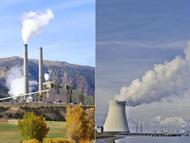Reliability Roulette
- By:
- Edward A. Reid Jr.
- Posted On:
- Oct 5, 2021 at 7:00 AM
- Category
- Climate Change
Service reliability has been a hallmark of the utility industry, which has made massive investments to assure reliable service. High reliability is important to the utilities’ customers and is demanded by utilities’ regulators. However, there is continuous tension among utilities, regulators and customers regarding the nature and scope of facilities investments required to assure adequate supply and acceptable reliability while controlling costs and rates.
The electric utility industry has approached reliability by installing numbers of high reliability, high availability, dispatchable fossil fuel and nuclear generating stations, while taking advantage of available hydroelectric generation. Reliability was further enhanced by the establishment of regional transmission organizations which could move power among the member utilities. Market growth was accommodated by adding generators and transmission capacity. Response to changing demand was accomplished by adjusting the number and type of generators in service, the outputs of the individual generators and by allowing system voltage to vary within narrow limits. Storage was limited to hydroelectric generation, including pumped storage facilities.
The natural gas industry approached reliability by acquiring gas from numerous geographically and geologically spaced wells and moving the gas to market through numerous pipelines. Response to changing demand was accomplished through wellhead flow management, pipeline compressor control and near-market and in-market storage in abandoned gas wells and above ground gas holders.
Both industries have also implemented various approaches to demand management, including contractual service interruption or reduction in exchange for reduced rates. These approaches have worked well over numerous decades. However, both industries are now being challenged by federal and state actions in response to the perceived threat of climate change.
The electric industry is being required to acquire increasing quantities of energy from intermittent sources of renewable energy, primarily wind and solar energy. These intermittent renewable energy sources are not reliably available and are not dispatchable under utility or RTO control. Regulations also frequently require the utilities to accept all electricity generated by these renewable facilities when it is available while adjusting the operation of dispatchable generators to meet the balance of demand. The challenge of managing the grid increases as the percentage of intermittent renewable generation increases, since the intermittent generator output can fluctuate rapidly and increasing dispatchable generation must be available to meet demand.
The natural gas industry is facing federal and state restrictions on exploration for and production of additional sources of supply. The hydraulic fracturing technology which has greatly expanded natural gas availability and reduced prices is being challenged by environmentalists. The continuing and expanded use of natural gas is also being challenged since its combustion produces CO2, which is viewed as a contributing cause of climate change.
Both utility industries are also being challenged by environmentalist opposition to the construction of new transmission capacity to move energy to growing markets.
These issues are adversely affecting the ability of both electric and gas utilities to assure reliable service at reasonable cost and are thus in conflict with the demands of both regulators and customers.


